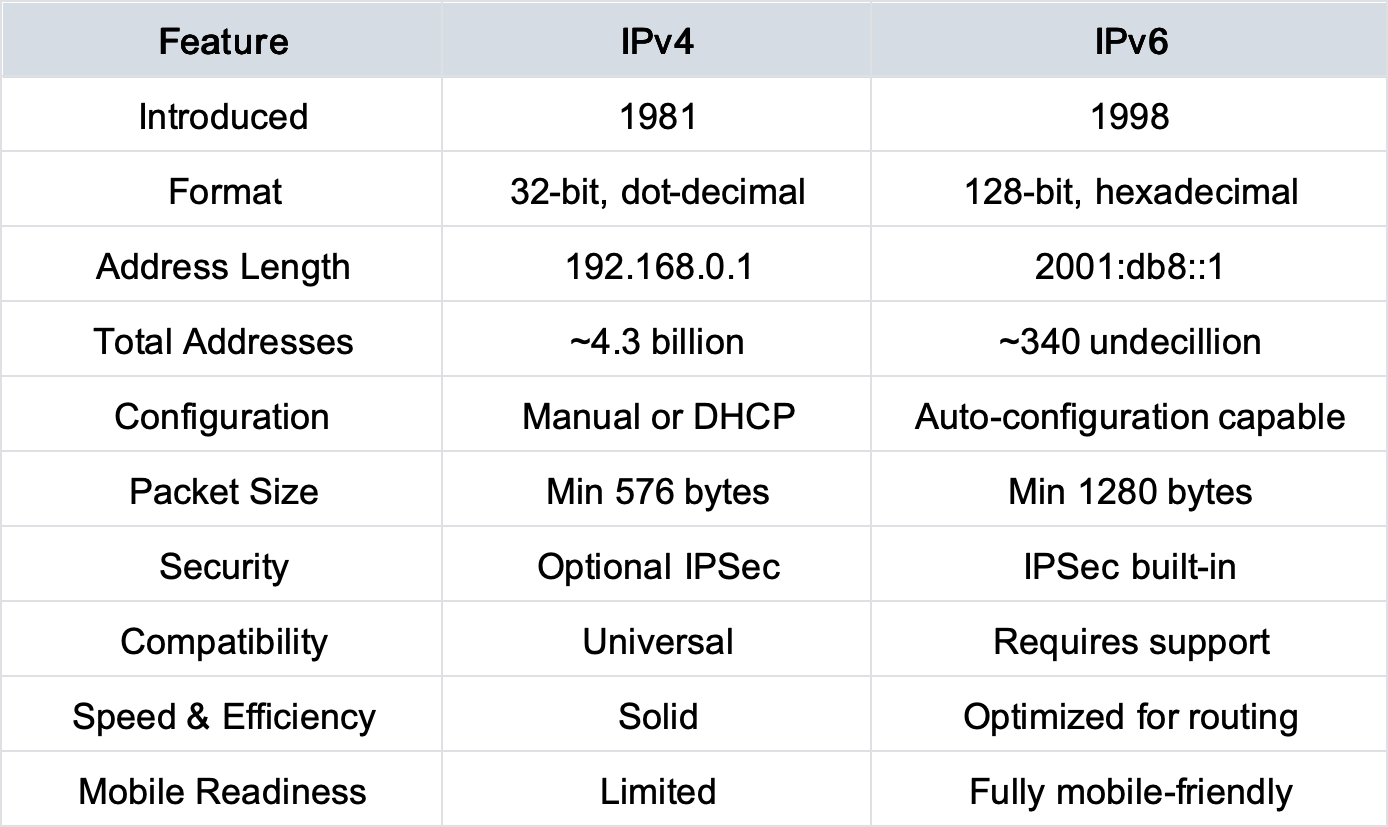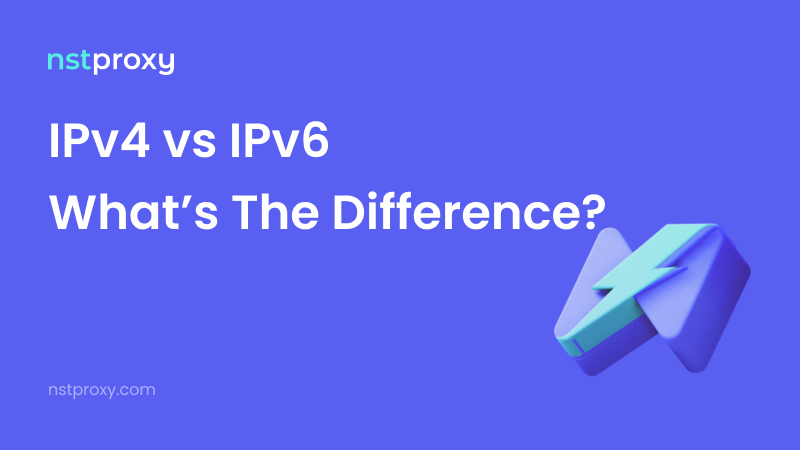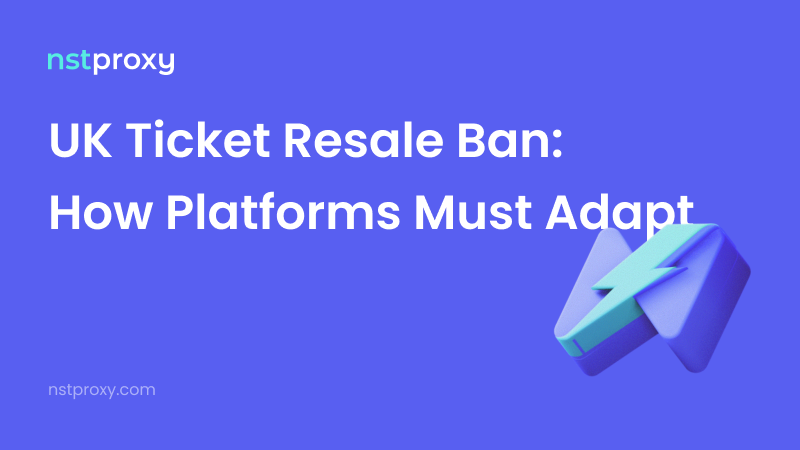What Is an IP Address?
An IP address (Internet Protocol address) is a unique numeric identifier assigned to every device connected to the internet. Think of it like a phone number — it lets devices locate and communicate with each other across networks.
IP addresses serve two core purposes:
- Identification – who you are on the network
- Routing – how data finds your device
Currently, two versions of IP addresses are in use: IPv4 and IPv6. Let’s dive into their differences, why IPv6 is growing in importance, and how it affects proxy users like you.
What Is IPv4?
IPv4 is the fourth version of the Internet Protocol. Introduced in the early 1980s, it uses 32-bit numeric addresses, typically displayed as four numbers separated by dots:
Example: 192.168.0.1
IPv4 allows for around 4.3 billion unique IP addresses. This was once considered more than enough — until mobile, IoT, and cloud computing exploded.
IPv4 Exhaustion: Why It Matters
The global pool of IPv4 addresses officially ran out in 2011. While most of the internet still runs on IPv4 today, providers now rely heavily on:
- NAT (Network Address Translation)
- IP reallocation & reuse
- Proxy networks
What Is IPv6?
IPv6 is the sixth and most recent version of the Internet Protocol. It was created in 1998 as a long-term solution to address depletion.
It uses 128-bit alphanumeric addresses, written in hexadecimal and separated by colons:
Example: 2001:0db8:85a3:0000:0000:8a2e:0370:7334
IPv6 supports a virtually limitless number of addresses — over 340 undecillion (3.4 x 10³⁸). It's designed for the modern internet: faster, more scalable, and more secure.
IPv4 vs IPv6: Key Differences

Which Is More Secure: IPv4 or IPv6?
IPv6 was designed with built-in security in mind. It requires IPSec — a protocol suite that encrypts and authenticates IP packets.
While IPv4 can use IPSec, it’s optional and often not implemented. IPv6 is the more robust option when security and privacy matter.
IPv4 vs IPv6: Cost Comparison at Nstproxy
Let’s break it down for real-world proxy usage.

Why the Difference?
IPv4 addresses are in short supply, making them more expensive. IPv6 addresses are abundant and newer, allowing providers like us to offer better pricing — especially for large-volume users.
Why Use Both? (Dual Stack Networks)
Since most websites still use IPv4 and IPv6 adoption is ongoing, the best solution is dual-stack support — using both protocols in parallel.
- IPv4 ensures compatibility
- IPv6 ensures scalability and long-term savings
With Nstproxy, you don’t need to choose — we support both seamlessly.
What You Need to Use IPv6 Proxies
To take advantage of IPv6, ensure your system and network are compatible:
- Modern Operating System
(Windows 10+, macOS X, Linux – all ready) - IPv6-Compatible Router
Check specs — older models may lack support. - IPv6-Ready Provider
Like Nstproxy
Test your IPv6 readiness: test-ipv6.com
Typical Use Cases for IPv6 Proxies
- Large-scale web scraping
- Ad verification on IPv6-only endpoints
- Simulating mobile traffic
- Social media automation (where supported)
- Bypassing geo-blocks in specific countries
At NstProxy, we offer enterprise-grade proxy infrastructure with both IPv4 and IPv6 options — optimized for performance, reliability, and global scale.
- ✅ Own IP pools & servers
- ✅ Flexible API access
- ✅ Dedicated support for high-volume clients
Get Started with Nstproxy
Join thousands of developers, agencies, and data professionals scaling with the next generation of proxy tech.
🌐 Try us now
📧 Contact: [email protected]
Free trial credits available — just ask
IPv6 is the future — and it’s already saving smart proxy users a lot of money. Want in?
Let’s talk.


